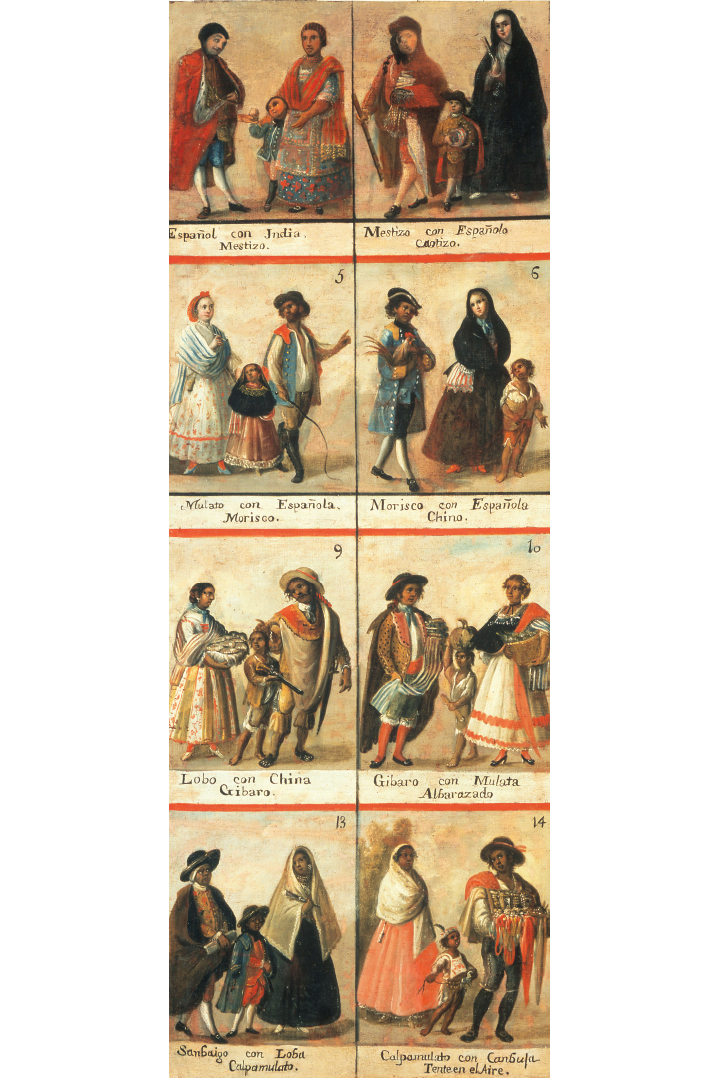Understanding World Societies:
Printed Page 478
> How did new encounters shape cultural attitudes and beliefs in Europe and the New World?

Mixed Races
The unprecedented mixing of peoples in the Spanish New World colonies inspired great fascination. An elaborate terminology emerged to describe the many possible combinations of indigenous, African, and European blood, which were known collectively as castas. This painting belongs to a popular genre of the eighteenth century depicting couples composed of individuals of different ethnic origin and the children produced of their unions. (Schalkwijk/Art Resource, NY)> PICTURING THE PASTANALYZING THE IMAGE: What do these images suggest about the racial composition of the population of Spanish America and the interaction of people with different racial and ethnic backgrounds? Who do you think the audience might have been, and why would viewers be fascinated by such images?CONNECTIONS: What elements of this chapter might suggest that these are romanticized or idealized depictions of relations among different racial and ethnic groups?
The unprecedented mixing of peoples in the Spanish New World colonies inspired great fascination. An elaborate terminology emerged to describe the many possible combinations of indigenous, African, and European blood, which were known collectively as castas. This painting belongs to a popular genre of the eighteenth century depicting couples composed of individuals of different ethnic origin and the children produced of their unions. (Schalkwijk/Art Resource, NY)> PICTURING THE PASTANALYZING THE IMAGE: What do these images suggest about the racial composition of the population of Spanish America and the interaction of people with different racial and ethnic backgrounds? Who do you think the audience might have been, and why would viewers be fascinated by such images?CONNECTIONS: What elements of this chapter might suggest that these are romanticized or idealized depictions of relations among different racial and ethnic groups?
TTHE AGE OF OVERSEAS EXPANSION heightened Europeans’ contacts with the rest of the world. These contacts gave birth to new ideas about the inherent superiority or inferiority of different races. Religion became another means of cultural contact, as European missionaries aimed to spread Christianity in both the New World and East Asia. The East-